#Pharaoh Narmer
Explore tagged Tumblr posts
Text
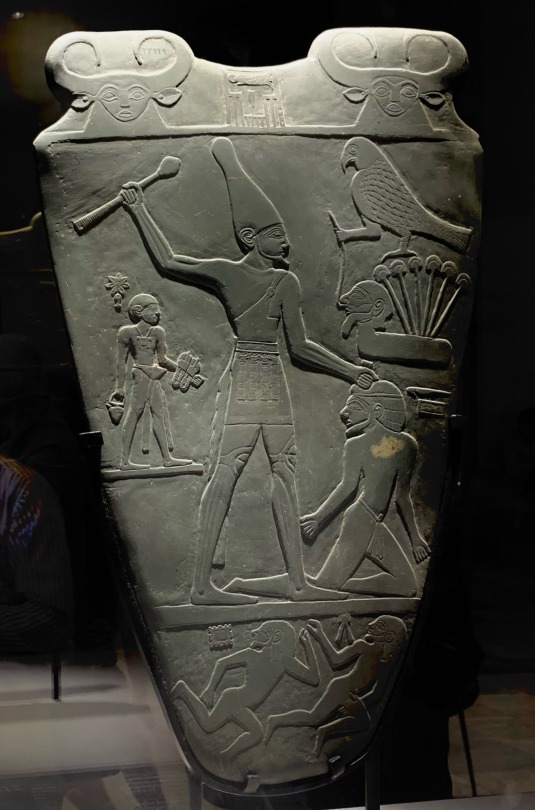
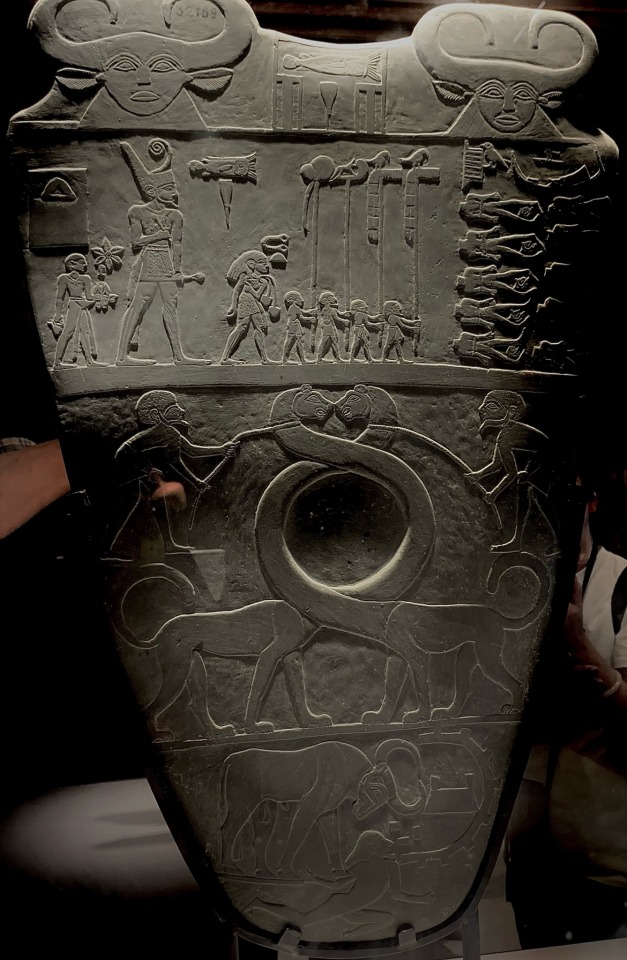
The Narmer Pallette, about 3000BC
Narmer seems to have been the first king of a unified Egypt, and this pallette likely celebrates his victories in battle. Despite its having been created right at the start of the dynastic period, it already shows lots of artistic motifs that would become canon throughout Egyptian civilization, including the form of the human body that shows the face and much of the body in profile, but the shoulders face on. The musculature of the legs and knees are also a point of focus, something that is common in Old Kingdom art. We can also see the goddess Bat, with a human face and cow ears and horns; she was a cow goddess associated with stars and the sky, whose identity (and iconography) later merged with Hathor's. Horus is also present.
On the other side of the pallette, two fantastically long-necked lions, held in check by their captors, demonstrate a symmetry that suggests they are an early precursor to later 'unification' scenes that show two gods facing one another (usually Horus and Seth or Horus and Thoth) while standing over the symbol for unification.
23 notes
·
View notes
Text
Random thought about how funny some Egyptian espers' nicknames can be. It only brought to my attention after I posted Intisar doodle and someone called her Inti (I didn't register at first as a nickname cuz "Inti" is fem "you" in Arabic) and made me think back of actual Nicknames for Intisar, and which Parmi or Tevor might use XD
- Nasoora (very cutesy way saying her name) [Parmi]
- Sar-sar (just a nice nickname) [Tevor]
- Su-Su (baby chicken) [probably Parmi too XD]
- Sarsorti/Sarsora ("my cockroach/cockroach") [Tevor could be calling her that/j]
#Arabic is my mother tongue XD so was nice calling back some nicknames#only few Egyptian espers actually have Arabic names some are actually names of old Pharaohs and Queens#like Narmer Unas and Djoser and Tiye#dislyte#dislyte intisar#murky rambles
71 notes
·
View notes
Text





King Narmer. Although, this head has never been proven to be Narmer or anyone in fact. I'm unsure if it's ever been proven to be truly ancient... Sir Flinders Petrie bought it from a marketplace in Cairo "just in case" it turned out to be someone, he thought it may be Narmer. But there is no evidence thus far. However, I drew him anyway based upon the head and the palette. 🌷
#ancientegypt#egypt#kingnarmer#narmer#sirflinderspetrie#petriemuseum#art#history#reconstruction#pharaoh#kingofegypt#artistsoninstagram#egyptology#kemet#ancient egypt
2 notes
·
View notes
Text
youtube
The name of King "Mina" has become one of the most famous names in the collective memory of the Egyptian people. It is always associated with another phrase: "The Unification of the Two Lands," referring to the unification of the kingdoms of the North and the South, and thus the emergence of Egypt as a unified state and kingdom governed by a single ruler under a system that remained stable for nearly three thousand years, marking the beginning of the Dynastic Period. But how did we come to know about King "Mina"? How was the unification of the Two Lands achieved? And what are the Two Lands?
#ancientegypt#ancient#themysteryofkingmina#ancientegyptians#KingMina#theunifieroftheTwoLands#Washearealhistoricalfigure?#firstpharaoh#egyptianhistory#history#HowwastheunificationoftheTwoLandsachieved?#howdidwecometoknowaboutKingMina?#whataretheTwoLands?#ancientegyptdecumentary#documentary#historychannel#documentairefrance2#ancientegypt101#ancientegyptanimation#narmer#kingnarmer#menes#narmerpalette#pharaoh#whowasnarmer?#firstpharaohofancientegypt#ancienthistory#narmerfirstpharaoh#narmeregyptianking#narmerhistory
0 notes
Text
Ancient African Timeline: 3150 BCE The Egyptian States are Unified
Narmer, an ancient Egyptian pharaoh who reigned between 3273 and 2980 BCE during the Early Dynastic Period, is widely regarded as the unifier of Egypt and the founder of the First Dynasty. His reign marked a turning point in Egyptian history, as he is often credited with the unification of Upper and Lower Egypt, which laid the foundation for the powerful civilization that would endure for…
0 notes
Text
12 Facical Recreations Of Africa's Ancient Egyptian Pharaohs/Figures Based On Their Respective Sculptures
The 12 facial recreations of Africa’s ancient Egyptian pharaohs and figures based on their respective sculptures offer a captivating glimpse into the past. From the regal visage of Ahmose Nefertari to the serene countenance of Queen Tiye, each reconstruction brings history to life. The majestic presence of Amenhotep III and the enigmatic charm of Nefertiti are captured with remarkable precision.…
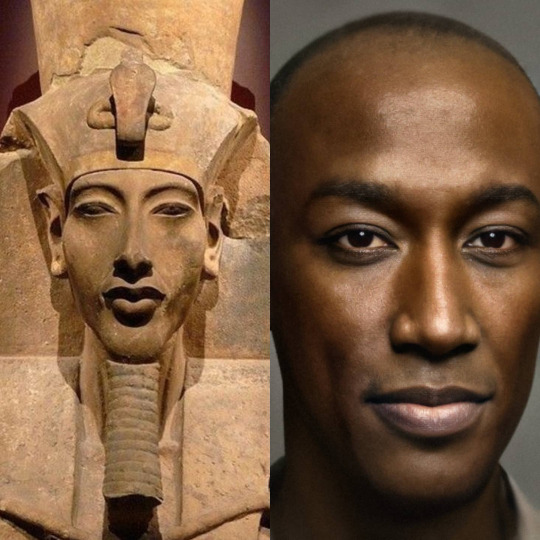
View On WordPress
#12 Ancient Egyptian Pharaohs Facical Recreations#African History#Ahmose Nefertari#Akhenaten#Amenemhat III#Amenhotep III#Ancient Egyptian Pharaohs Facical Recreations#Ancient Egyptians#ancient egyptians history#Djoser#Narmer#Nefertiti#Queen Tiye#Rameses II#Sahure#Senusret III#Tutankhamen
0 notes
Text

Weeping Gods (WIP)
This tale sweeps you up and drops you back 3500 years into the past, straight onto the banks of the Nile, at the dawn of the Egyptian New Kingdom. The Empire has only been liberated from a hundred year old occupation. The scars left by the war are still healing and yet, threats loom on the horizon again. Some powerful artifacts have been stolen and the king entrusts you with their recovery. Suddenly finding yourself out of your depth and all out of options, you have no choice but to agree to the dangerous mission. You don't know what awaits you on this journey but you know one thing for sure: if you don't catch the enemies of the empire, you will risk more than your own life.
Take your fate into your own hands, solve mysteries, meet new friends, fall in love, learn about magic, monsters, spirits, gods, and have fun in the ancient Egyptian Kingdom in this historical fantasy novel.
The story is a work of fiction and is not historically accurate.
Features
Choose from 4 different origin characters, each with unique stories and choices that will follow you through the rest of the game: - a priest in over their head with a caring and loyal mentor - a noble very much in over their head with a problematic family - the captain of the Theban Guard, who is way too tired for this - a thief from the slums of Thebes, desperate for survival
Play as male, female or non-binary; gay, straight or bi.
Build friendships, rivalries, or find love with a young prince, a mysterious spymaster, a brooding spirit, an elite warrior… or even the pharaoh himself.
Explore Egypt through a series of adventures with a ragtag team of characters
Solve mysteries, climb the Great Pyramid of Giza, deal with the sparks of revolution, and help secure the kingdom's future
Warnings: The story will contain heavy and dark themes, excessive swearing, mental health problems, and optional sexual content, so it is recommended for mature audiences only. The whole list of triggering content can be found in the beginning of the demo.
The Romances
Narmer - A kind and patient man with a golden heart, a fierce sense of duty, a bloody past, and way too little free time.
Qenna (m/f) - The living enigma. Fun and casual at first glance, but why is everyone warning you against spending time with them?
Zaia (m/f) - Spends most of their time brooding or hiding from people, but they can be surprisingly cheeky with those they feel comfortable with.
Tabiry - A dependable and loyal woman, she is the type of person you could trust to have your back in any situation.
Ahmose (m/f) - Young and impressionable, with a dazzling smile and too much hope for a better future.
The Demo
Chapter 1 completed
Chapter 2 completed
Word count (with code): around 298 000 words Word count (without code): 272 000 words Average playthrough on any origin: around 40 000 words
Last update: 29. Nov. 2024. (First published: 14. Aug. 2024.)
DEMO | FAQ | ROs and NPCs | Discord | CoG Forum | Ko-Fi (for tips)
#interactive fiction#interactive game#interactive if#interactive novel#weeping gods#historical fantasy#historical fiction#wip#ancient egypt#choicescript
611 notes
·
View notes
Text
Egyptian pharaohs had a wide variety of crowns to choose from. This was partially because pharaohs ruled over what had once been two kingdoms — Lower and Upper Egypt. Lower Egyptian rulers wore the “white crown,” or hedjet. It looked kind of like a bowling pin. Here’s the early pharaoh Narmer wearing it:
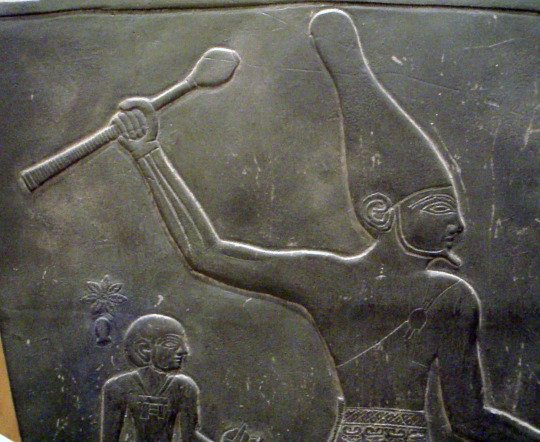
The pharaohs of Upper Egypt had a cooler crown, the “red crown,” or deshret. It had a nifty swoop at the back, and sometimes a little curlicue sticking up from it. Here’s a version from a New Kingdom painting:

{Buy me a coffee} {WHF} {Medium} {Looking Through the Past}
More on Egyptian crowns, including why we've never found an actual Egyptian royal crown:
359 notes
·
View notes
Note
how does it feel to be the first person to piss on the poor
Ka or Sekhen, predecessor of the earliest well evidenced monarch of Egypt, Narmer, reigned in pre-unified Egypt around the 35th century BCE. Although he is obviously not the first hereditary autocrat to ever exist in the world, that name still is a handy pin to place in the timeline of the global history of monarchist governments, as one of the earliest reputed pharaohs in one of the oldest societies to leave written records.
So, buddy, while I appreciate the credit I'm at least 5300 years away from being the first.
33 notes
·
View notes
Note
Yami wouldn't find that sporting enough
I don't think Yami concerns himself about such things as being sporting, not when lives are on the line. After all, he's a Pharaoh... And no matter if he ruled between Akhenaten and Tutankhamon as in the original (and him actually being Smenkhkare would explain just why this Pharaoh was subjected to damnatio memoriae) or right before Narmer as per the international version, Pharaoh fought for keeps. And with the Egyptian account of the Battle of Khadesh flat-out saying Rameses II DID use magic to single-handedly hold the line long enough for the reserves to enter the fray...
Yami canonically started cheating during the TTRPG arc with Yami Bakura to prove that he knew YB was cheating and forced him to agree that they'd both stop. He could've been cheating the whole time or at least playing dirtier and it is only by his grace that he does not
16 notes
·
View notes
Text

"Hore" or what is known in Egyptology as "Horus"🇪🇬
- "Hoor" is the first Egyptian deity in the form of a falcon. His name is in the ancient Egyptian language "Hur", or: "Hoor", and in Greek "Horus", and with this name it was commonly mentioned in Egyptology references. He is one of the most important and oldest Egyptian deities ever, and since his appearance has been associated with the monarchy and the legitimacy of government, as the legitimate heir of his father "Osiris". Accordingly, the king was considered to be “Hoor” on earth, or as his representative on the throne of Egypt, an actual or symbolic representation. He is the ideal of all the kings of Egypt; As he avenged his father "Osiris" from his killer "Set" and he was just, and therefore they took the name "Horus the Living", which is one of the oldest royal titles in ancient Egypt, and his name was mentioned in ancient times associated with the god Hathor and the first scorpion king.
His name appeared on archaeological sources since the beginning of the dynasties, where Horus was depicted in this body on the prayer hall of King “Narmer” while he was restraining the captives from the era of the First Dynasty in Egypt while he held the heads of the defeated enemies of Egypt and presented them to the king, and even the Fourth Dynasty was the title of Pharaoh consisting only From the name of Horus, and during that dynasty the name "Golden Horus" also appeared, as a second title for the king.
The texts of “(Hijr Palermo)” refer to the kings of pre-dynastic times in Egypt that they were known as “Shamsio Hor”, meaning (followers of Hor), and the deity “Hoor” appeared in many images, and its theology expresses that it is one of the most Egyptian deities, depth and breadth in ancient Egyptian theology.
89 notes
·
View notes
Text

"Colorful, engaging, and illustrated throughout with more than 180 photographs, Ancient Egypt is a vivid pictorial introduction to 4,000 years of Ancient Egyptian civilization.
Arranged chronologically, Ancient Egypt offers a compact photographic guide, from the 4000 BC Naqada culture to the end of the Ptolemaic dynasty with the suicide of Cleopatra in 30 BC.
In between, discover the Narmer Palette, a 31st-century BC stone tablet that records the unification of Upper and Lower Egypt by King Narmer; learn about Amenhotep the Magnificent, during whose reign Egypt reached the peak of its artistic and international power; marvel at the massive, rock-cut temples of Abu Simbel, dedicated to Pharaoh Ramesses II (“the Great”), marking the southern extent of the Egyptian Empire and celebrating his victory over the Hittites at the Battle of Kadesh; and discover how Egypt was ruled by Archaemenid Persia for almost 200 years, until the arrival of Alexander the Great and his all-conquering Macedonian army."
— Ancient Egypt: A Photographic History, by Nigel Fletcher-Jones
22 notes
·
View notes
Text
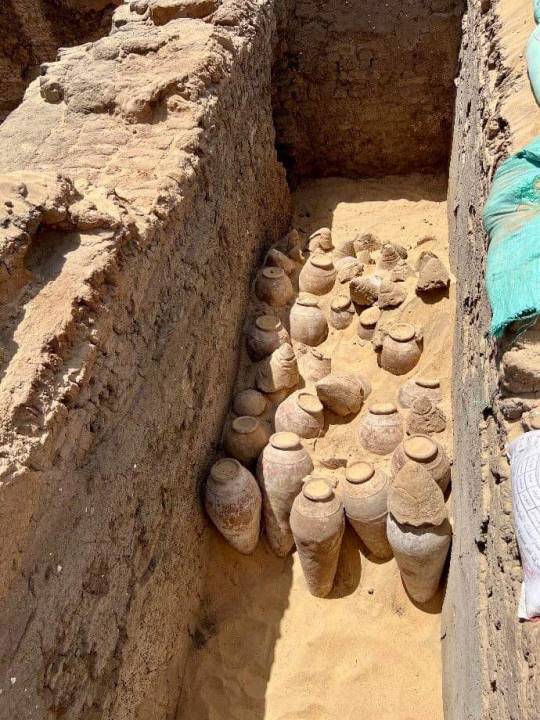
Archaeologists Uncover 5,000-Year-Old Wine in Egypt
A new discovery has been made by an archaeological team from Egypt, Germany, and Austria working in Upper Egypt. They found some 5,000-year-old wine inside sealed jars that had never been opened.
This discovery was made in Queen Merneith’s tomb in Abydos, Sohag. In addition to the ancient wine, the team also found furniture that was used for funerals.
Mostafa Waziri, who is the Secretary General of the Supreme Council of Antiquities, shared on Sunday that these old jars are big and in good condition.
Dietrich Raue, who is the Director of the German Archaeological Institute, added that the team also found out more about the life of the ancient queen and the time she ruled.
When they looked at the writings on one of the tablets found in the tomb, they discovered that Queen Merneith had a significant role. She was in charge of important government offices, explained Dietrich Raue.

Raue also mentioned that the team is still working diligently to find out more about this enigmatic queen’s life.
Christiana Kohler, who leads the mission, revealed that their research into the tomb has revealed that it was constructed using materials like raw bricks, clay, and wooden planks.
Kohler pointed out that Queen Merneith’s royal tomb in Abydos is possibly the only one from the First Dynasty that has been found up to this point.
“This observation, together with other evidence, radically challenges the oft-proposed but unproven idea of ritual human sacrifice in the 1st Dynasty,” Kohler stated.

Additionally, she mentioned that there are 41 tombs near the queen’s tomb, which belong to her advisors and servants. Queen Merneith was the first female pharaoh
There’s evidence to suggest that Queen Merneith might have been a ruler of Egypt on her own. This idea is based on official records.
If this turns out to be true, and the earlier royal wife, Neithhotep, didn’t rule independently, then Merneith could be considered the first female pharaoh and the earliest queen who ruled on her own in recorded history. She governed around 2950 BC for a period that we’re not sure about, according to Wikipedia.
Merneith’s name, which means “Beloved by Neith,” has symbols related to the ancient Egyptian deity Neith on her stele. She might have been the daughter of Djer and likely the senior wife of Djet.
Being Djer’s daughter would make her the great-granddaughter of Narmer, the first pharaoh to unite Egypt. She was also the mother of Den, who succeeded her as ruler.
By Abdul Moeed.

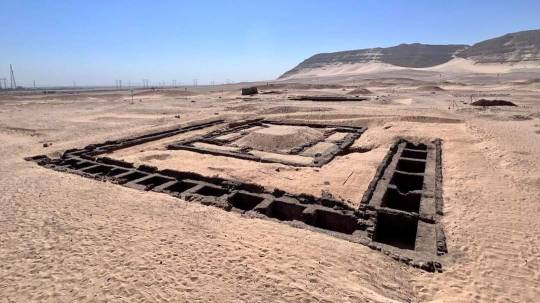
#Archaeologists Uncover 5000-Year-Old Wine in Egypt#Queen Merneith’s tomb in Abydos Sohag#first dynasty#ancient tomb#ancient grave#ancient artifacts#archeology#archeolgst#history#history news#ancient history#ancient culture#ancient civilizations#ancient egypt#egyptian history
111 notes
·
View notes
Text
Egyptian pharaoh names but I’ve turned them into ancient cat names
1. Tutankhbastet (Tutankhamun)
This is the most obvious name on this list because literally all I’ve done is change out the name of one god for another god. I’m not doing that for any of the others I promise.
King Tutankhamun is the one pharaoh everybody knows about, which is ironic since his birth name literally means “the living (ankh) image (tut) of the Hidden One (Amun).” (“Tut” can also be translated as “likeness” or “statue.”)
Amun was the Egyptian god of, uh… stuff (he’s hidden. His whole deal is that he’s hidden). Bastet was the Egyptian cat goddess. Sometimes she was portrayed as a lady with a cat head, but sometimes she was just a cat. If you switch Amun’s name out for Bastet’s, it becomes “the living (ankh) image (tut) of the Cat Goddess (Bastet).” Truly, a name that only the most dignified and elegant cats deserve.
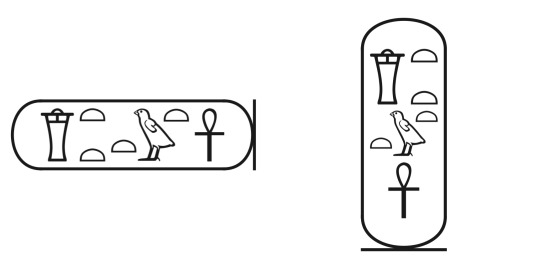
Transliteration: twt-anx-bAstt
You could also say it “Tutankhbast” if you prefer.
2. Hatmiushepsyu (Hatshepsut)
Hatshepsut’s name means “the foremost (hat) of noblewomen (shepsut),” and it turned out to be really good name for her, since she became pharaoh and all. If you want to change it to “foremost of noble cats” it becomes Hat-miu-shepsyu, “miu” meaning “cats” and shepsyu meaning “noble.”
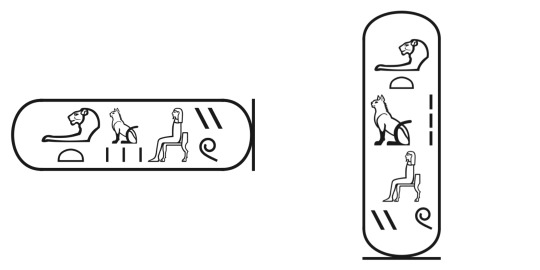
Transliteration: HAt-miww-Spsyw
3. Nedjestiti (Nefertiti)
I am aware that calling Nefertiti a pharaoh is controversial since there’s a chance that Neferneferuaten might have been her daughter and not her. But finding names of pharaohs that you can do this to and are also popular enough to be recognized is hard so shush.
Nefertiti was supposedly the most beautiful woman in the ancient world (although we can’t confirm that because Nefertiti and all the other ancient women are now dead). Her name fits this, because it means “the beautiful one (nefert) has come (iti).”
“Nedjes” is a word meaning “small,” so changing the name to Nedjest-iti makes it mean “the small one has come.”
This is a good name, because if your cat is bad then you can use it in a derogatory sense to call them a penniless little beggar. Unfortunately, it only really works for girl cats, because the masculine version is “Nedjesiu,” which loses the pun quite a bit.

Transliteration: nDst-ii.ti
4. Miumer (Narmer)
Narmer was the first pharaoh to rule over all of Egypt, and like other early pharaohs the only name used for himself was his Horus name instead of his throne name or birth name. (You know that TS Elliot poem about how cats have a bunch of different types of names? Pharaohs are like that too). Because Narmer was his Horus name, it was written inside an enclosure called a serekh instead of a cartouche.
The name itself means something like “striking (mer) catfish (nar)” or “fierce (mer) catfish (nar).” To change it to “striking cat” or “fierce cat,” you need to change nar to miu: Miu-mer. (Yeah the English translations of this one are stronger wordplay than the Egyptian versions, sorry.)
If your cat is a girl then the name should be Miutmer instead.

Transliteration: miw-mr
5. Bitokris (Netiqerti/“Nitokris”)
Queen Nitokris was either a cunning murderess, whose name lurks in the shadows of history… or she was a 3,000 year old transcription error. The only potential record we have of her name in hieroglyphs is the name of a pharaoh called “Netiqerti” on the Turin kings list. This could be Nitokris, or it could be a mistake made by a scribe while trying to copy the name of the name of another, completely different pharaoh.
If Netiqerti is Nitokris, then her name means “Neith (Net, a goddess) is excellent (iqerti).” Bit-iqerti/Bitokris would mean “honey (bit) is excellent (iqerti).”

Transliteration: bit-iqr.ti
#Ancient egypt#egyptology#ancient languages#This list ending up having more girl pharaohs than boy pharaohs on it which is neat (even if one of them probably wasn’t real)#A lot of the famous names of male pharaohs I first thought of using are things like ‘the justice of Ra is strong’ ‘Thoth is born’#Or some other combination of god name + religious meaning#And just switching another god out for Bastet gets very repetitive so I was only willing to put one version of that on this list#And the king Tut one works the best because Tut and Bastet are both well known enough that some non-nerds will probably be able to get it#Also because ‘The living image of Bastet’ is just a great name for a cat#The Nitokris one also follows that format but I was able to think of something that wasn’t just another god without completely changing it#And I’m so proud of myself for thinking of that. Bitokris is a great name.#I put this list in order of which of the pharaohs on it are most well known. If it was in order of the best names Bitokris would be first#and Tutankhbastet would be second#Ava has thoughts#Id in alt#ancient egypt stuff#Long post
73 notes
·
View notes
Text

Hathor | Goddess of Love and Motherhood Talon Abraxas
Hathor is one of the most famous goddesses of Ancient Egypt. She was known as “the Great One of Many Names” and her titles and attributes are so numerous that she was important in every area of the life and death of the ancient Egyptians. It is thought that her worship was widespread even in the Predynastic period because she appears on the Narmer palette. However, some scholars suggest that the cow-headed goddess depicted on the palette is in fact Bat (an ancient cow goddess who was largely absorbed by Hathor) or even Narmer himself.
There is no doubt that her worship was well established by the Old Kingdom as she appears with Bast in the valley temple of Khafre at Giza. Hathor represents Upper Egypt and Bast represents Lower Egypt.
She was originally a personification of the Milky Way, which was considered to be the milk that flowed from the udders of a heavenly cow (linking her with Nut, Bat and Mehet-Weret). As time passed Hathor absorbed the attributes of many other goddesses but also became more closely associated with Isis, who to some degree usurped her position as the most popular and powerful goddess. Yet, Hathor remained popular throughout Egyptian history.
More festivals were dedicated to her and more children were named after her than any other god or goddess of Ancient Egypt. Her worship was not confined to Egypt and Nubia. She was worshipped throughout Semitic West Asia, Ethiopian, Somalia, and Libya, but was particularly venerated in the city of Byblos.
Hathor was a sky goddess, known as “Lady of Stars” and “Sovereign of Stars” and linked to Sirius (and so the goddesses Sopdet and Isis). Her birthday was celebrated on the day that Sirius first rose in the sky (heralding the coming inundation). By the Ptolemaic period, she was known as the goddess of Hethara, the third month of the Egyptian calendar.
As “the Mistress of Heaven” Hathor was associated with Nut, Mut and the Queen. While as “the Celestial Nurse” she nursed the Pharaoh in the guise of a cow or as a sycamore fig (because it exudes a white milky substance).
As “the Mother of Mothers” she was the goddess of women, fertility, children and childbirth. She had power over anything having to do with women from problems with conception or childbirth, to health and beauty, to matters of the heart. Yet, she was not exclusively worshipped by women and, unlike the other gods and goddesses, she had both male and female priests.
20 notes
·
View notes
Text
๋࣭ ⭑⚝ The Rise and Fall of Ancient Egyptian Civilization๋࣭ ⭑⚝

hey guys im back AND late but here was a very long and slightly complicated one enjoy :D

Ancient Egypt, one of the most iconic civilizations in history, thrived for over three millennia, leaving an indelible mark on human culture, art, and governance. Its history is a tapestry of great achievements and inevitable decline, shaped by its geographic advantages, complex social structure, and interactions with neighboring powers.
The Geographic Foundation of Egyptian Civilization
The Nile River was the foundation of Ancient Egypt's prosperity. Flowing northward through an arid desert, the Nile created a fertile strip of land that was ideal for agriculture. The river's annual inundation deposited nutrient-rich silt onto the land, enabling the Egyptians to grow abundant crops, which in turn supported a growing population and the development of a complex society.
Geography played a crucial role in the development of a unified Egyptian state. The Nile served as a natural highway, facilitating communication and trade between Upper and Lower Egypt. This unity was essential for the centralized control that characterized Ancient Egyptian governance. Moreover, the deserts to the east and west, and the cataracts of the Nile to the south, provided natural barriers that protected Egypt from invasions, allowing the civilization to flourish relatively undisturbed by external threats.
The Unification of Egypt and the Early Dynastic Period
Around 3100 BCE, King Narmer (often identified as Menes) achieved the unification of Upper and Lower Egypt, marking the beginning of the Early Dynastic Period (c. 3100–2686 BCE). This unification was a critical moment in Egyptian history, laying the groundwork for the centralized state that would dominate the region for centuries.
During this period, the pharaoh emerged as both a political and religious leader, considered a divine ruler responsible for maintaining Ma'at, the cosmic order. The early pharaohs established a bureaucratic system that allowed them to administer the state efficiently, collect taxes, and organize large-scale construction projects. The development of hieroglyphic writing during this time enabled the recording of official decrees, religious texts, and monumental inscriptions, further solidifying the authority of the pharaohs.
The Old Kingdom: The Age of the Pyramids
The Old Kingdom (c. 2686–2181 BCE), often referred to as the "Age of the Pyramids," saw the construction of some of the most enduring symbols of Ancient Egypt. The most famous of these is the Great Pyramid of Giza, built during the reign of Pharaoh Khufu (c. 2589–2566 BCE). This period was characterized by the centralization of power in the hands of the pharaoh, who was regarded as a living god responsible for the well-being of the state.
The economy of the Old Kingdom was based on a redistributive system, where the surplus from agriculture was collected by the state and used to fund massive construction projects, support the bureaucracy, and maintain the military. This system allowed the pharaohs to command vast resources, which were used to build monumental structures that symbolized their divine authority and ensured their legacy.
However, the immense resources required for these projects eventually strained the economy. By the end of the Sixth Dynasty, around 2181 BCE, the centralized power of the pharaohs began to decline. Low Nile floods, combined with the growing power of regional governors (nomarchs), led to a weakening of central authority and the collapse of the Old Kingdom, ushering in the First Intermediate Period.
The First Intermediate Period: A Time of Fragmentation
The First Intermediate Period (c. 2181–2055 BCE) was marked by political fragmentation and social instability. With the collapse of the Old Kingdom, Egypt split into several smaller, competing regions, each ruled by local leaders. This period is often described as a "dark age" in Egyptian history, characterized by a decline in monumental building, cultural achievements, and central authority.
Despite the challenges of this period, the resilience of Egyptian society eventually led to the reunification of the country. The rulers of Thebes, in Upper Egypt, gradually gained power and, by the end of the Eleventh Dynasty, succeeded in reuniting Egypt under the leadership of Pharaoh Mentuhotep II. This marked the beginning of the Middle Kingdom, a period of renewed stability and prosperity.
The Middle Kingdom: A Period of Renewal
The Middle Kingdom (c. 2055–1650 BCE) is often regarded as a renaissance period in Egyptian history. The pharaohs of the Middle Kingdom focused on consolidating their power, reforming the administration, and expanding Egypt's influence beyond its traditional borders.
One of the most significant achievements of the Middle Kingdom was the expansion of Egypt's borders into Nubia, a region rich in gold and other valuable resources. The Egyptians established a series of fortresses along the Nile in Nubia, securing control over the region and ensuring a steady supply of resources for the state. The Middle Kingdom also saw increased trade with the Levant and other regions, bringing in goods such as cedarwood, lapis lazuli, and silver.
The literature of the Middle Kingdom reflects a more introspective and realistic view of life compared to the Old Kingdom. Works such as the "Tale of Sinuhe" and the "Instructions of Amenemhat" emphasize themes of loyalty, morality, and the responsibilities of the pharaoh to his people. The concept of Ma'at continued to be central to Egyptian thought, but there was also a growing recognition of the complexities and challenges of maintaining order in the world.
The Middle Kingdom pharaohs undertook large-scale irrigation projects to improve agricultural productivity and prevent the famine that had plagued the late Old Kingdom. These projects included the construction of canals and reservoirs to control the Nile's flooding and to ensure a stable water supply for agriculture. The increased agricultural productivity contributed to the prosperity of the Middle Kingdom and supported the growth of a more complex and stratified society.
The Second Intermediate Period and the Rise of the New Kingdom
The decline of the Middle Kingdom led to the Second Intermediate Period (c. 1650–1550 BCE), a time of political instability and foreign invasions. The Hyksos, a group of Asiatic people, established themselves as rulers in Lower Egypt, introducing new technologies such as the horse-drawn chariot and composite bow. Meanwhile, native Egyptian rulers maintained power in Thebes, leading to a divided Egypt.
Eventually, the Theban rulers mounted a successful campaign to expel the Hyksos, leading to the reunification of Egypt under Ahmose I and the beginning of the New Kingdom (c. 1550–1070 BCE). This period is often referred to as the "Empire Period" due to Egypt's expansion and dominance over neighboring regions, including Nubia, the Levant, and parts of the Near East.
The New Kingdom pharaohs, such as Thutmose III, Hatshepsut, and Ramses II, expanded Egypt's borders through military campaigns and diplomatic alliances. The empire's wealth was further bolstered by tribute from conquered territories and extensive trade networks. The period also saw a resurgence in monumental building projects, with the construction of massive temples, such as those at Karnak and Luxor, and the rock-cut temples at Abu Simbel.
Religion played a central role in the New Kingdom, with the pharaohs increasingly emphasizing their divine status and their connection to the gods. The worship of the sun god Amun-Ra became particularly prominent, and the pharaohs were often depicted as the "son of Ra," chosen to rule by divine mandate. The New Kingdom also saw the rise of the powerful priesthood of Amun, which would later become a significant political force in its own right.
However, the immense costs of maintaining an empire, both in terms of resources and military commitments, gradually weakened the state. The death of Ramses II in 1213 BCE marked the beginning of a slow decline, as his successors struggled to maintain the empire's vast territories. Internal strife, including power struggles among the nobility and challenges to the authority of the pharaoh, further destabilized the kingdom.
The Decline and Fall of Ancient Egypt
The decline of Egypt accelerated during the Third Intermediate Period (c. 1070–664 BCE), a time characterized by political fragmentation and foreign invasions. The once-unified kingdom split into multiple smaller states, with the Libyans and Nubians establishing their own dynasties in different regions of Egypt. The arrival of the Sea Peoples, a confederation of naval raiders who caused widespread destruction throughout the Eastern Mediterranean, further strained Egypt's resources and military capabilities.
Despite these challenges, Egypt experienced a brief resurgence during the Late Period (c. 664–332 BCE) under the Saite dynasty, particularly under Pharaoh Psamtik I, who reasserted control over the country and repelled foreign invaders. The Saites focused on reviving the cultural and religious traditions of the past, as well as rebuilding the country's economy. However, this revival was short-lived, as Egypt was increasingly drawn into the conflicts of the larger Mediterranean world.
In 525 BCE, Egypt was conquered by the Persian Empire under Cambyses II, becoming a satrapy within the larger Achaemenid Empire. Although Egypt regained its independence briefly during the 28th to 30th Dynasties, it was finally and irrevocably absorbed into the Macedonian Empire following the conquest by Alexander the Great in 332 BCE. The subsequent Ptolemaic Period (305–30 BCE) represented a fusion of Greek and Egyptian cultures, but it was clear that the era of native Egyptian rule had come to an end.
The death of Cleopatra VII in 30 BCE and the annexation of Egypt by the Roman Empire marked the final chapter in the long and storied history of ancient Egyptian civilization. The fall of Egypt was not simply the result of external conquest, but also the culmination of centuries of internal decay, economic decline, and the gradual loss of autonomy in the face of rising foreign powers.
The rise and fall of ancient Egypt is a testament to the complex interplay of geography, governance, culture, and external forces in shaping the destiny of a civilization. From its origins along the life-giving Nile to its zenith as a powerful empire and its eventual decline, Egypt's history offers valuable insights into the factors that sustain and undermine civilizations. The legacy of ancient Egypt, preserved in its monuments, art, and written records, continues to influence and inspire the modern world. The civilization's story serves as both a cautionary tale and a reminder of the enduring achievements of human ingenuity and resilience.

guys i get my gcse results on thursday help
#history#dark aesthetic#dark academia#literature#egypt#ancient egypt#egyptian#egyptology#egypt tours#ancient history
9 notes
·
View notes